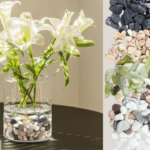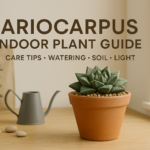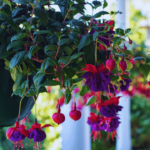Phalaenopsis orchids, often known as moth orchids, have captured the hearts of plant enthusiasts around the world. Their graceful blooms and elegant leaves can transform any space, making them a popular choice for both novice and experienced gardeners. In this comprehensive guide, we’ll take you through everything you need to know about caring for your phalaenopsis orchid—from understanding its unique needs to tackling common problems. Let’s dive in and ensure your orchid not only survives but thrives!
Introduction to Phalaenopsis Orchids
What Makes Phalaenopsis Orchids Special?

Phalaenopsis orchids are beloved for their striking, long-lasting blooms and minimal care requirements. Their flowers, which come in a range of colors from pure white to vibrant pinks and yellows, can last for several months, making them a prized addition to any home. Unlike many other orchid varieties, phalaenopsis orchids bloom on long-lasting stems that can produce multiple flowers over time.
Brief History of Phalaenopsis Orchids
Originating from the tropical regions of Asia and Australia, phalaenopsis orchids have a rich history intertwined with cultural traditions and the art of horticulture. They became widely popular in the orchid trade during the 19th century and have since been cultivated extensively due to their aesthetic appeal and ease of care. Today, they are a symbol of elegance and beauty in homes and offices around the globe.
Understanding Your Orchid’s Needs
Caring for a Phalaenopsis orchid starts with understanding its basic needs. This includes paying attention to light, water, temperature, and air circulation. Getting these fundamentals right ensures your orchid remains healthy and continues to bloom year after year.
Light Requirements

Ideal Lighting Conditions
Phalaenopsis orchids thrive in bright, indirect light. Direct sunlight can scorch their leaves, while too little light may inhibit flowering. The ideal location is near a window with filtered light, such as an east- or west-facing window. If you notice the leaves losing their vibrant color or the plant isn’t blooming, it might be receiving too little light.
How to Supplement Natural Light
If natural light is insufficient, you can supplement with fluorescent or LED grow lights. Position the lights about 12-18 inches above the plant to mimic the natural light intensity. This can be particularly helpful during the darker winter months or in homes with limited natural light.
Watering and Humidity
Best Watering Practices
Watering is perhaps the most critical aspect of orchid care. Overwatering is a common mistake that can lead to root rot, while underwatering can cause the plant to dry out. The best practice is to water your orchid thoroughly, allowing water to flow out of the drainage holes in the pot. Then, let the orchid dry out slightly before the next watering. A general rule of thumb is to water once a week, but this may vary based on your environment’s humidity and temperature.
Managing Humidity Levels
Phalaenopsis orchids prefer humidity levels between 40% and 70%. Consider using a humidity tray or room humidifier in dry indoor environments, especially during winter when heating systems are running. Placing a shallow tray filled with pebbles and water under your orchid can create a microenvironment with higher humidity around the plant.
Temperature and Airflow
Optimal Temperature Ranges
Maintaining a stable temperature is key to orchid health. Phalaenopsis orchids do best in temperatures ranging from 65°F to 75°F during the day and slightly cooler at night. Sudden temperature fluctuations can stress the plant and affect its blooming cycle.
Importance of Air Circulation
Good airflow helps prevent fungal infections and pest infestations. Position your orchid in a place where there is gentle air circulation. If your home is particularly stagnant, consider using a small fan set on low to ensure that air moves around your plant without creating a cold draft.
Preparing for Orchid Care
Before diving into daily maintenance, proper preparation is essential. This involves choosing the right potting medium, container, and fertilizers to give your orchid the best start.
Choosing the Right Pot and Medium
Phalaenopsis orchids require a well-draining potting medium, such as bark or sphagnum moss. Traditional soil can hold too much moisture, leading to root rot. Transparent plastic pots are often recommended because they allow you to see the roots and monitor their health. When repotting, ensure that the new pot is only slightly larger than the current one, as orchids prefer to be snug in their containers.
Selecting Quality Orchid Fertilizer
Fertilizing your orchid is essential for encouraging blooms and promoting overall growth. Use a balanced, water-soluble fertilizer formulated specifically for orchids. Follow the manufacturer’s instructions carefully—typically, fertilize every two weeks during the growing season and reduce feeding during the dormant period.
Step-by-Step Orchid Care Guide
Now that we’ve covered the basics, let’s break down a practical, step-by-step guide to caring for your phalaenopsis orchid.
Daily Maintenance Tips
- Inspect the Plant: Check the leaves and roots for signs of stress or disease. Look for discolored leaves or mushy roots, which could indicate overwatering.
- Adjust Lighting: Ensure the orchid is receiving the right amount of indirect sunlight. Rotate the pot occasionally for even light distribution.
- Maintain Humidity: If needed, mist the plant lightly to increase humidity without over-saturating the leaves.
Weekly and Monthly Routines
- Watering Schedule: Stick to your watering routine. Remember, consistency is key to preventing root problems.
- Fertilizing: Feed your orchid with a diluted solution of orchid fertilizer. Monitor the plant’s response and adjust accordingly.
- Cleaning: Wipe the leaves with a damp cloth to remove dust, allowing the plant to breathe and absorb light efficiently.
- Inspect for Pests: Look for signs of pests like spider mites or mealybugs. Early detection is vital for preventing infestations.
How to Repot Your Phalaenopsis Orchid
Repotting should be done every 1-2 years to refresh the growing medium and remove any decayed material from the roots.
- Choose the Right Time: The best time to repot is just after the orchid has finished blooming.
- Prepare Your Materials: Have a clean pot, fresh orchid mix, and sterilized tools ready.
- Remove the Orchid Gently: Carefully take the orchid out of its pot, gently teasing away old medium from the roots.
- Trim Damaged Roots: Use sterilized scissors to remove any mushy or rotten roots.
- Place in New Pot: Position the orchid in the new pot and fill in with fresh medium. Make sure the crown of the orchid sits above the medium to prevent rot.
- Water Lightly: After repotting, give your orchid a light watering to settle the medium.
Common Problems and Their Solutions

Even with the best care, phalaenopsis orchids can sometimes encounter issues. Here are some common problems and practical solutions to help you troubleshoot.
Yellowing Leaves and Root Rot
Yellow leaves are often a sign of overwatering or poor drainage. Check the roots—if they appear mushy or have a foul smell, root rot may be present. To remedy this, repot your orchid into fresh, well-draining medium and adjust your watering schedule.
Pests and Diseases
Common pests include aphids, mealybugs, and spider mites. If you notice small insects or sticky residue on the leaves, treat your orchid with an appropriate insecticidal soap. For fungal issues, ensure proper air circulation and avoid overwatering. In severe cases, consult a specialist for treatment advice.
Enhancing Orchid Health
To keep your phalaenopsis orchid in peak condition, consider these advanced care strategies.
Fertilizing Strategies
While regular fertilizing is essential, it’s important to use the right concentration of nutrients. Over-fertilizing can lead to salt buildup in the medium, damaging the roots. Use a balanced fertilizer at half the recommended strength and increase gradually as needed. A “weakly, weekly” approach is often recommended by experienced growers.
Pruning and Grooming
Pruning isn’t just for aesthetics—it can also help stimulate new growth. Once your orchid has finished blooming, you can trim the flower spike about an inch above a node to encourage the development of secondary blooms. Regularly remove any dead or damaged leaves to keep the plant looking fresh and healthy.
Seasonal Orchid Care
Adjusting Care for Different Seasons
Seasonal changes can affect your orchid’s growth cycle. During winter, when indoor air tends to be drier, you may need to increase humidity around your plant. Conversely, in the summer, ensure that your orchid is not exposed to excessively hot conditions which can dry it out quickly. Adapting your care routine seasonally will keep your orchid thriving throughout the year.
Tips from Experienced Orchid Growers
Expert Advice and Common Myths
Over the years, many orchid enthusiasts have developed a treasure trove of tips and tricks. Here are some tried-and-true tips from the experts:
- Myth: Orchids need to be watered daily.
- Reality: Overwatering can be detrimental. Let the medium dry out between waterings.
- Reality: Overwatering can be detrimental. Let the medium dry out between waterings.
- Myth: More fertilizer means faster growth.
- Reality: Over-fertilizing can damage your orchid. Stick to a diluted, regular feeding schedule.
- Reality: Over-fertilizing can damage your orchid. Stick to a diluted, regular feeding schedule.
- Tip: Always use room temperature water to avoid shocking the roots.
- Tip: Monitor the environment closely and adjust your care routine as needed based on the orchid’s responses.
Additional Orchid Care Considerations
Environmental Factors
It’s not just about water and light—environmental factors such as air quality and seasonal changes play a significant role in orchid health. Avoid placing your orchid near drafts, heaters, or air conditioners that could cause sudden temperature shifts. A stable, gentle environment is ideal for promoting long-term growth.
The Importance of Patience and Observation
Caring for orchids is as much an art as it is a science. Every plant has its own personality, and what works for one may not work for another. Take the time to observe your orchid’s behavior. Notice subtle changes in leaf color, stem firmness, or root structure. These observations will help you adjust your care routine to better suit your plant’s needs.
Personal Experiences and Stories
Many orchid enthusiasts have shared stories of how nurturing a phalaenopsis orchid has transformed their approach to plant care. These personal experiences are invaluable, offering insights that go beyond technical advice. Whether it’s the thrill of the first bloom or the satisfaction of overcoming a pest infestation, each experience contributes to a deeper understanding of these fascinating plants.
A Closer Look at Orchid Growth Stages
Understanding the growth stages of your phalaenopsis orchid can help tailor your care routine. From the initial development of the plant, through its blooming phase, and into the resting period afterward, each stage requires a slightly different approach. Embrace these stages as part of the natural life cycle of your orchid.
Troubleshooting: When Things Go Wrong
Even the most dedicated orchid keepers face challenges. If you notice any signs of stress—such as drooping leaves, faded blooms, or an unusual smell—take action immediately. Common troubleshooting steps include checking the moisture level of your medium, adjusting the light exposure, and ensuring that the plant is free from pests. Remember, early intervention is key to saving your orchid from long-term damage.
Orchid Care Resources
For those who want to dive even deeper into orchid care, there are numerous online resources, forums, and local orchid societies. These communities offer a wealth of information, from detailed care guides to troubleshooting tips shared by experienced growers. Engaging with these communities can provide both support and inspiration as you continue on your orchid-growing journey.
Conclusion
Caring for a phalaenopsis orchid is a rewarding endeavor that blends science, art, and a bit of intuition. By understanding the plant’s unique needs, from the proper lighting and watering techniques to the importance of temperature and airflow, you set the stage for a thriving, beautiful orchid. Whether you’re a novice or a seasoned orchid enthusiast, the key is to remain patient, observant, and willing to adapt your care routine based on your orchid’s signals. Embrace the journey, enjoy the blooms, and let your phalaenopsis orchid become a lasting symbol of natural beauty in your home.
FAQs
1. How often should I water my phalaenopsis orchid?
Water your orchid approximately once a week, allowing the potting medium to dry out slightly between waterings. Adjust based on your home’s humidity and temperature.
2. Can I use regular household fertilizer on my orchid?
No, it’s best to use a fertilizer specifically formulated for orchids, as they have unique nutritional needs. Dilute it to avoid salt buildup in the medium.
3. What is the best way to increase humidity around my orchid?
Consider using a humidity tray filled with pebbles and water, a room humidifier, or occasionally misting the plant with water (while avoiding over-saturation of the leaves).
4. How do I know if my orchid is getting too much or too little light?
Leaves that are pale or yellow might indicate too little light, while scorched or crispy leaves can be a sign of excessive direct sunlight. Aim for bright, indirect light.
5. When is the best time to repot my phalaenopsis orchid?
The ideal time to repot is just after your orchid finishes blooming. This allows the plant to recover and adapt to a refreshed medium without the stress of ongoing blooming.







